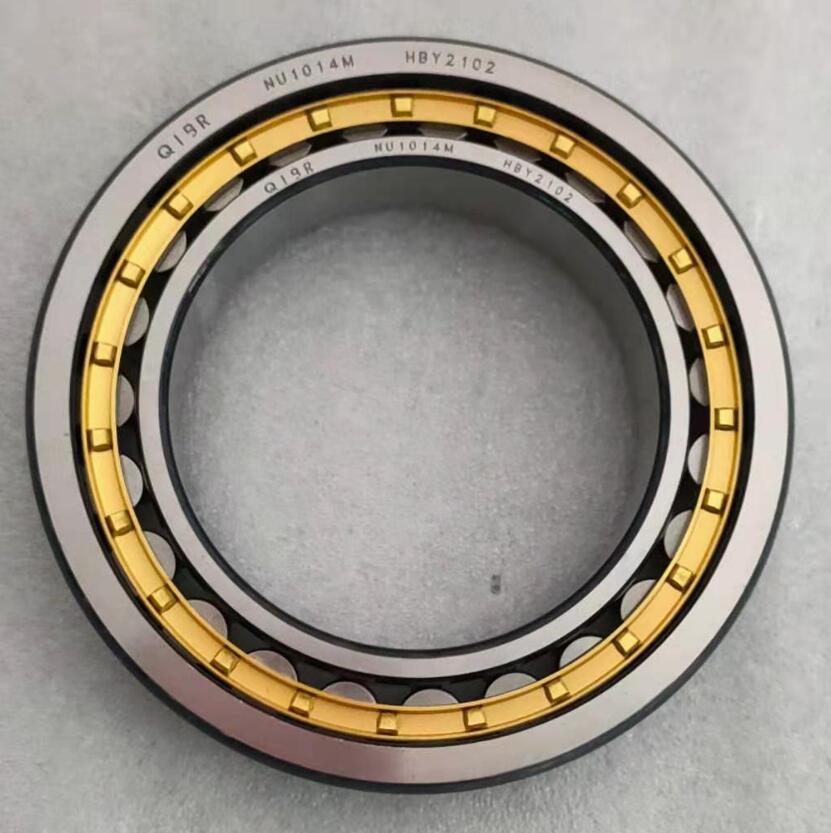Newsroom
Maintenance and Cleaning of Cylindrical Roller Bearings
2018-03-29To determine whether a disassembled cylindrical roller bearing can be reused, it should be thoroughly cleaned and then inspected. Carefully check the condition of the raceways, rolling surfaces, fit surfaces, wear of the cage, increase in clearance, and any damage or abnormality related to dimensional accuracy. For non-separable small ball bearings, support the inner ring horizontally with one hand and rotate the outer ring to check for smoothness.

For separable bearings like tapered roller bearings, the rolling elements and the raceway of the outer ring can be inspected separately. For large bearings, since they cannot be rotated by hand, visually inspect the rolling elements, raceways, cages, and shoulder surfaces. The more critical the bearing, the more careful the inspection must be.
The decision on whether a cylindrical roller bearing can be reused considers the degree of damage, mechanical performance, importance, operating conditions, and the period until the next maintenance. However, if any of the following defects are present, the bearing must be replaced:
- Cracks or notches on any part of the inner ring, outer ring, rolling elements, or cage.
- Breaks on the rings or rolling elements.
- Significant looseness on the raceway surfaces, shoulders, or rolling elements.
- Rust or damage on the raceway surfaces or rolling elements.
- Severe indentations or marks on the raceway surfaces or rolling elements.
- Obvious creep on the inner ring's inner diameter or the outer ring's outer diameter.
- Noticeable discoloration due to heat.
- Damage to the sealing rings or dust covers of grease-lubricated bearings.
Cleaning of Cylindrical Roller Bearings
When maintaining disassembled cylindrical roller bearings, first document the appearance of the bearings, confirm the amount of residual lubricant, and take samples for testing. Next, clean the cylindrical roller bearings. Common cleaning agents include gasoline or kerosene. The cleaning process is divided into coarse cleaning and fine cleaning, using separate containers. A metal mesh pad should be placed at the bottom of the container to prevent direct contact between the bearings and any dirt in the container.
During coarse cleaning, use a brush to remove grease and debris until they are roughly clean, then proceed to fine cleaning. Fine cleaning involves rotating the bearings in cleaning oil while carefully cleaning them. It's important to keep the cleaning oil clean throughout the process.
Key points to note during cleaning:
1. First, remove the old oil from the cylindrical roller bearings, then use a brush or cloth soaked in gasoline or kerosene to clean them thoroughly, ideally at least twice. Also, clean the bearing caps and dry them.
2. Do not rotate the bearings during cleaning to avoid pressing debris into the raceways.
3. After cleaning with kerosene, clean the bearings again with gasoline, as kerosene contains more moisture, which can lead to rust.
4. Clean bearings should be dried with a clean cloth; do not use cotton cloths as lint may fall into the bearings, and avoid touching the bearings with bare hands to prevent rust from sweat. The cleaned bearings can be placed on a clean wooden board or paper to allow any residual gasoline or kerosene to evaporate.
5. If the cleaned and dried cylindrical roller bearings show no noticeable play and the surfaces of the rolling elements are intact, add clean lubricant according to specifications and put them back into service.


